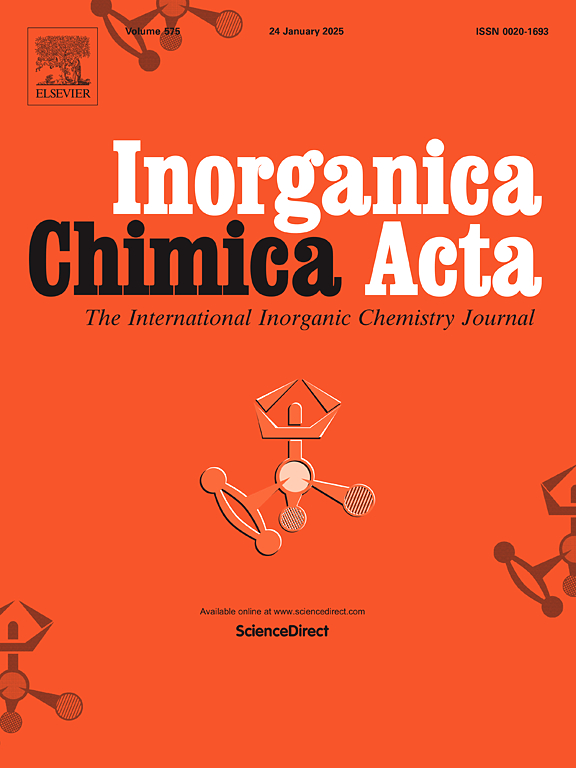Synthesized Tetrakis (2-oxy benzylidene) - hyroanthracen-2-yloxy zinc and cobalt (II) Phthalocyanines: Structural, DFT and SEM-EDS study
IF 2.7
3区 化学
Q2 CHEMISTRY, INORGANIC & NUCLEAR
引用次数: 0
Abstract
The Synthesis reaction, structural, spectroscopic, and binding characteristics of new Zn(II) and Co(II) phthalocyanine (Pc) complexes, denoted as Co-Pc (4) and Zn-Pc (5), respectively, containing two (2-oxybenzylidene) anthracene-dione groups, are described. Following the synthesis of 3-[(6-hydroxy-9,10-dihydroanthracen-2-yloxy)phthalonitrile] 3, Zinc Phthalocyanine (Zn-Pc) 4 and Cobalt Phthalocyanine (Co-Pc) 5 were subsequently prepared via chemical reaction with zinc and cobalt salts in dimethylformamide under heat and vacuum conditions. SEM image analysis confirmed homogeneous formation for both Zn-Pc and Co-Pc compounds, with average size of 470 nm and 69 nm, respectively. Compounds 3, 4, and 5 were characterized using elemental analysis, UV–Visible spectroscopy, Fourier Transform-Infrared Spectroscopy, 1H-Nucleer Magnetic Resonans Spectroscopy, and Q-TOF MS. Additionally, Density Functional Theory (DFT) and Time-Dependent Density Functional Theory (TD-DFT) calculations were performed to investigate the structural and electronic properties of compounds 4 and 5. Many phthalocyanine compounds have been synthesized to date, however, the synthesis of Compound 4 with corrosion inhibitors properties is particularly significant in this research.

求助全文
约1分钟内获得全文
求助全文
来源期刊

Inorganica Chimica Acta
化学-无机化学与核化学
CiteScore
6.00
自引率
3.60%
发文量
440
审稿时长
35 days
期刊介绍:
Inorganica Chimica Acta is an established international forum for all aspects of advanced Inorganic Chemistry. Original papers of high scientific level and interest are published in the form of Articles and Reviews.
Topics covered include:
• chemistry of the main group elements and the d- and f-block metals, including the synthesis, characterization and reactivity of coordination, organometallic, biomimetic, supramolecular coordination compounds, including associated computational studies;
• synthesis, physico-chemical properties, applications of molecule-based nano-scaled clusters and nanomaterials designed using the principles of coordination chemistry, as well as coordination polymers (CPs), metal-organic frameworks (MOFs), metal-organic polyhedra (MPOs);
• reaction mechanisms and physico-chemical investigations computational studies of metalloenzymes and their models;
• applications of inorganic compounds, metallodrugs and molecule-based materials.
Papers composed primarily of structural reports will typically not be considered for publication.
 求助内容:
求助内容: 应助结果提醒方式:
应助结果提醒方式:


